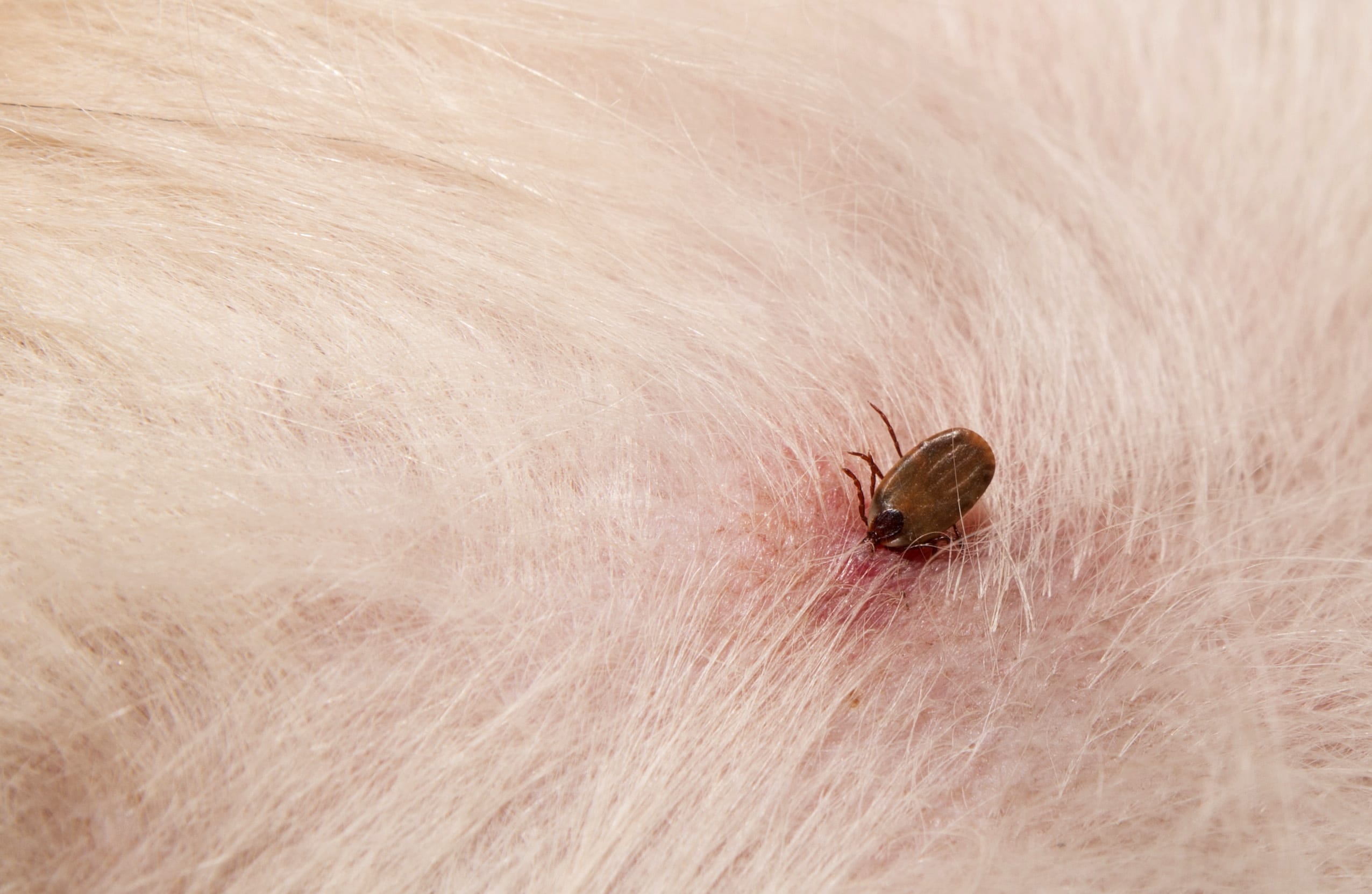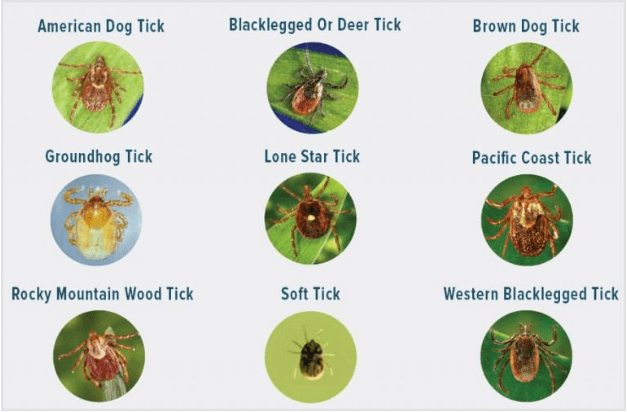External Parasites
It’s common for pets to experience discomfort from external parasites like fleas or ticks at some point in their lives. These parasites can be highly irritating and may lead to serious skin issues or transmit diseases. Fortunately, modern treatments have made it easier than ever to manage, control, and prevent many external parasites.

Fleas are prevalent throughout the United States. Temperature and humidity extremes can kill them, but they can survive for long periods of time under a surprising range of conditions. Developing fleas can even become dormant for many months if there are no hosts available. If your pet spends time outdoors or around other animals (even the wildlife that passes through – rabbits, squirrels, other cats, coyotes, etc.) the risk of picking up fleas increases.
However, even a completely indoor pet can become infested with fleas. We humans can bring fleas into our home on our clothing. Once fleas have entered a home, they can multiply very quickly under favorable year-round conditions, adding to the challenge of controlling them in a home environment.
Once they have found a host they begin to feed immediately and lay a large number of eggs. Adult fleas may stay on your pet, but the eggs and larvae fall off and remain in the environment where they can hide in places like your carpeting, bedding, furniture, and baseboards. Fleas may not be easily visible on your cat or dog. However, if an infestation is heavy, you may see fleas on the animal’s skin or you may find them by combing their fur with a flea comb. Adult fleas are the easiest stage of the parasite to find, but they account for less than 5% of an infestation. The other stages (eggs, larvae, and pupae), which make up the other 95%, are smaller and more difficult to find.
When a pet has fleas, you may see small black/brown specks on their skin or bedding. These specks look like tiny coffee grounds and are commonly called “flea dirt.” Flea dirt is the feces of adult fleas and is actually the digested blood of the host. When the dark particles get wet, the red color returns, which may help with identification. Some pets are allergic to fleas and can become intensely itchy from a single flea bite, whereas other pets may experience mild itching or none at all. Just because your pet isn’t scratching doesn’t mean there are no fleas.
There are many effective products available today that can safely be used on dogs and cats to help protect them and control fleas. It is highly recommended to use these products year-round as it is still possible to encounter fleas during the winter months in our area.

Ticks are small eight-legged parasites that are more closely related to spiders and mites than insects. They must feed on blood in order to survive and reproduce. Despite a very popular myth, ticks don’t jump or fall out of trees onto their hosts; nor can they fly. They can climb, however, and they tend to attach themselves to shrubs and blades of tall grass. They can be active on winter days if the ground temperatures are above 45 degrees Fahrenheit (7.2 degrees Celsius).
Ticks are efficient carriers of disease because they attach firmly when sucking blood, feed slowly, and may go unnoticed for a considerable amount of time. The feeding process for a tick often takes several days to complete. Unfortunately, it only takes 36-48 hours for them to spread disease.
Some of the more common tick related diseases include the following:
- Anaplasmosis
- Babesiosis
- Ehrlichiosis
- Lyme Disease
- Rocky Mountain Spotted Fever
The more commonly seen ticks in our area include the following:
- American dog
- Lone star tick
- Deer or Blacklegged tick
- Brown dog tick

Remember that ticks are successful parasites that can be difficult to kill. Even if you are using an effective tick control product, you should still check your pet daily for ticks and remove them as soon as you find them. Keeping your pet out of wooded areas, tall grasses, and other tick habitats is the best way to reduce the risk of exposure. Being diligent about checking your pet (and yourself) after spending time outside in higher risk areas gives you the best chance to find and remove any ticks before they can transmit disease.
There are many effective products available today that can safely be used on dogs and cats to help protect them and control ticks. It is highly recommended to use these products year-round as it is still possible to encounter ticks during the winter months in our area.
First, it is important to understand the only part of a tick that is buried in the skin is its mouthparts; the body and legs are still visible once a tick has attached itself. Secondly, you should never remove a tick with your fingers. Fine point tweezers work well, or you can find special tick removing tools online or at local pet stores.
Grasp the tick as close to the skin surface as possible and pull straight out with a steady, even pressure. Do not twist or jerk the tick as this may cause the mouthparts to break off and remain imbedded in the skin, increasing the chances of infection. Continue applying steady pressure even if the tick does not release immediately. It may take a minute or two of constant, slow pulling to cause the tick to release. Once the tick is removed, thoroughly disinfect the bite area and wash your hands with soap and water.
DO NOT FOLLOW OLD WIVES’ TALES – Home remedies such as applying petroleum jelly or grease, or touching the rear of the tick with a hot match do not work effectively and are not recommended. These techniques cause the tick to salivate and can actually increase the chance of getting a disease. Also, they may end up causing your pet more pain and discomfort all without removing the tick!

